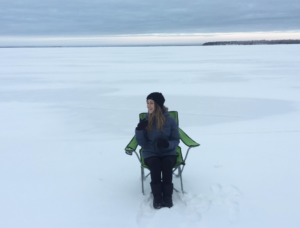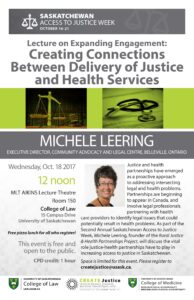What is social accountability, and how does it translate into the activities of the College of Medicine?
Written by Lisa Yeo, Division of Social Accountability Strategist, U of S
The Division of Social Accountability, CoM was established in 2011 to promote and support the college’s social accountability promise – a promise to direct its Clinical, Advocacy, Research and Education (CARE Model) activities towards the priority health needs of the communities we serve. We see this promise reflected in the 2017-2022 College of Medicine Strategic Plan and mission statement of our college. It’s a promise to address community health needs, but it’s also much more than that.
The definition of social accountability came out of the World Health Organization in 1995 and states that social accountability is “the obligation [of medical schools] to direct their education, research and service activities towards addressing the priority health concerns of the community, region, and/or nation they have a mandate to serve. The priority health concerns are to be identified jointly by governments, health care organizations, health professionals and the public.” But what does that really mean and how does it translate into the activities of the CoM? What values and philosophy are we upholding by being socially accountable?
For us, social accountability is about health equity. It’s about access to quality healthcare for all people and it’s about meeting the unique needs of underserved populations. It’s about engaging with and being responsive to the issues our communities face and recognizing that we—as a College of Medicine, as current and future clinicians, researchers, health educators and administrators—are but one part of the complex condition that is health. Improving health is tantamount to working together in partnership with policy makers, health care organizations, health professionals and communities to create a sustainable and equitable health care system. It’s about humbly acknowledging the limitations of our clinical work, and appreciating that major and pervasive factors that contribute to the wellness and ill-health of Canadians often lie far beyond the walls of the hospital or the clinic.
Translated into our world of medical education, social accountability is about ensuring that our graduates are adequately prepared to respond to the diverse and ever-changing health needs of the population. It is producing a physician workforce that is diverse in dimensions such as ethnicity and religion, gender and sexual orientation, geographic origin, socioeconomic status, etc., by attracting an applicant base (both student and faculty) that is more representative of the Canadian population. Medical schools demonstrate their social accountability through a commitment to producing the right mix of professionals (i.e., specialists and generalists) and ensuring their graduates go on to practice in areas where they are needed most.
Social accountability means the content and context of the learning environment reflects the diversity of geographic, socioeconomic and cultural practice settings. It’s about supporting and promoting community-engaged teaching and learning that is of mutual benefit to partnering organizations, students and the university. It emphasizes a philosophy that values health promotion, disease prevention (“thinking upstream”) and cultural safety as key components of medical care. It’s preparing graduates to work in multidisciplinary, inter-professional teams that can work together to tackle all the determinants of health—including the social determinants—to reduce health inequities. It emphasizes our role in instilling a culture of health advocacy where physicians are accountable to society and recognize their duty to improve the health and well-being of their patients, their communities and the broader populations they serve. It’s about preparing future physicians to be leaders who engage in the evolution of the health care system and contribute to sustainability through health system reform.
In the world of research, social accountability translates into investigation inspired by and responsive to the needs of the community, especially the needs of our underserved communities; it is about supporting and promoting high-quality community-engaged research related to expressed needs. It is often research that is collaborative, participatory and action-focused from the onset, with the research agenda, questions, methodology and knowledge translation components being developed in partnership with key stakeholders. In socially accountable research, mechanisms are put into ensure direct community impact: investigators take initiative to develop and implement interventions in collaboration with the community. It is research that emphasizes population health and has a role in identifying and anticipating the health status and health care needs of the community. It is basic biomedical research that creates new understanding of the biological pathways to the determinants of health and applied clinical research that evaluates the safety and efficacy of drugs, treatments and procedures and contributes to the quality of care provided. It is health services research that evaluates new delivery models and their impact from the level of individual patients to the health system.
And at the structural level of our college, social accountability is partnership and engagement: engagement with our community, health system and health provider partners. It’s a genuine commitment to meaningfully engage in a manner that is mutually beneficial with recognition of the local and regional community as primary stakeholders. In redefining who is “expert,” we strengthen the CoM’s reputation for engaging in respectful and trusting partnerships. Partnership in designing, implementing and evaluating our education, research and service programs to meet the priority health needs of the communities we serve is key. Partnering with health regions and health organizations to helps to ensure graduates are properly deployed, supported and retained where they are most needed. Partnerships for social accountability is understanding the integrity of relationships and working from a collaborative leadership perspective that will have the best possible impact on socially marginalized and medically underserved people and communities.
We recognize that it can be difficult to wrap one’s head around the concept of social accountability and that it is often at the application stage, where theory is translated into practice, that things become a little clearer. The four-part series of papers Practising Social Accountability outlines how clinicians can actualize social accountability in their practice, from the micro to the macro levels. The division will be releasing a series of resources outlining how social accountability may be actualised through curriculum, admissions, research, etc. in the coming months. Stay tuned!





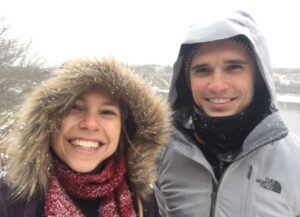
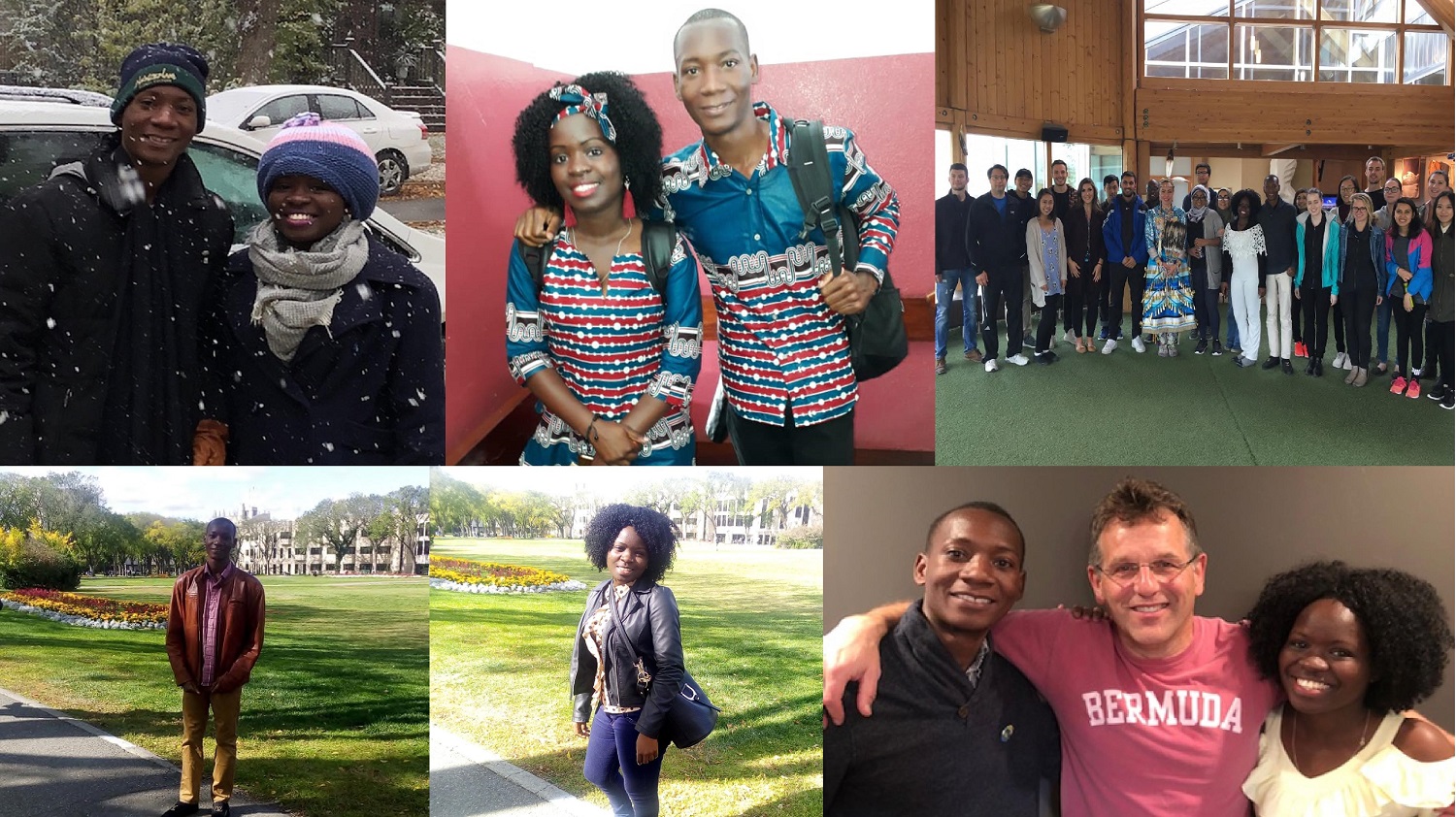

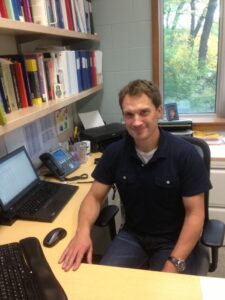 Dr. Josh Lawson (Faculty, Canadian Centre for Health and Safety in Agriculture) describes how a Division of Social Accountability Global Health Travel Award helped him research Childhood Asthma in Poland.
Dr. Josh Lawson (Faculty, Canadian Centre for Health and Safety in Agriculture) describes how a Division of Social Accountability Global Health Travel Award helped him research Childhood Asthma in Poland. 